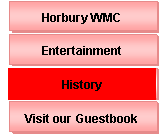|
Horbury Working Members Club |
|
C I U Affiliated, Horbury WMC was Established in 1896 |
|
History of Horbury W.M.C. 1894 to date. © By David Robinson CMD. |
|
In the year of 1894, a small number of local Horbury men were stood in Queen Street, Horbury, Wakefield, West Yorkshire, England. They were discussing the cost of Ales and Stouts in the local public houses and the lack of sporting facilities for people of the town.
The men had heard that the Working Mens Club and Institute Union had been formed. The founder and driving force behind the Union was the Reverend Henry Solly MA. He resigned his Unitarian ministry in Lancaster to become the organizing secretary of the Union in 1892. He travelled ceaselessly, persuading, entreating all and sundry, employers, employed, to start “Working Mens Clubs”
It was decided to form such a club in Horbury. They secured premises at the top of New Street, Horbury. The first President and Steward were messrs. Andrew Lambert and Squire Robinson respectively. The Club being named Horbury Working Mens Club was first registered and affiliated to the Working Mens Club and Institute Union in 1896.
|
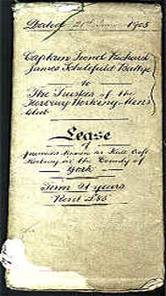
|
The 1905 lease between Captain Battye and the Trustees of Horbury Working Mens Club. |
|
The Club grew in popularity and the premises were fast becoming too small for the Clubs needs. On the 26th July 1899 “Hallcroft, Cluntergate, Horbury became available for lease.
“Hallcroft being a large country house with over eight acres of land. The house was erected in 1827, by Mr John Schofield, lawyer, of Horbury, who was also a Common Lands Trustee. Mr Schofield’s Niece, Miss Frances Bibby ( whose parents were connected with the Bibby Line of Steamships ) married the late Captain Battye’s father.
The Committee and Members of Horbury Working Mens Club agreed to take up the lease at a cost of £85 per annum, for Twenty One Years and moved into the premises some six day’s later. They literally rolled the barrels of beer down from their old premises to “Hallcroft” in order to continue trading as soon as possible. |

|
Capt. Battye’s Signature on the original Lease of 21st June 1905. |
|
The lease that the rent of £85 per annum had to be paid in two equal halves on the last Thursdays in January and July. The Property, Gardens and Pleasure Grounds were to be well maintained also “Cultivated in a husband like manner the kitchen garden”.
“Hallcroft” has long been regarded as one of the townships show places, and from the front a fine view of Calder Grove, on the outskirts of Wakefield, to Wooley, a small village half way between Wakefield and Barnsley, can be obtained. A Bowling Green, Football and Cricket pitches were constructed. For many years and even today the Bowling Green is noted for its picturesque setting and is a favourite haunt of the Members and their wives.
No other Club in the area could boast of so much accommodation. On the ground floor was an entrance lobby, reading room, a large bar and two big front rooms, together with indoor lavatories. Upstairs there was a large concert hall, Committee room, bathroom and lavatories together with two attics. In addition, part of the building is used as the Stewards quarters. (Formally the servants quarters).
A founder Member was Mr Alfred Kershaw a former newsagent of Queen Street, Horbury and his Membership card bore the number One. His son Lockwood Kershaw was a member until his death at the age of 92, the latter days of his life being a Life Member. Lockwood’s son Harold became a member at the age of 18 and is a life Member today. His brother Norman was a member and former Doorman. Norman being the father of Hilary Womersley who is the wife of Mr David Womersley a current Trustee of the Club.
Football and Cricket teams were formed and many successful seasons followed. A Bandstand over the lower side of the bowling Green, proved very popular in the Summer, where regular band concerts were given. Members children’s sports and gala days were held these too being popular.
During the early years local members used the clubs bathroom, after completing their day’s work in the local mines and engineering factories, to clean up before enjoying a pint or two at the bar..
During the 1914/1918 Great War the Club was used extensively by troops coming and going to war.
On the 12th June 1918, a second lease was signed, by the Club Trustees, for a further 21 Years. The cost per annum being £86.0.0d, this being a £1 per annum increase on the previous lease. Along with the lease document Captain Battye sent the following letter, dated 4th June 1918.
|
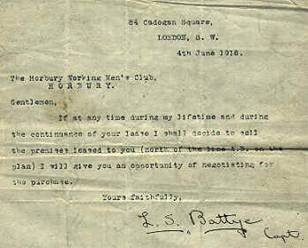
|
The letter Reads:
Gentlemen, If at any time during my lifetime and during the continuance of your lease I shall decide to sell the premises leased to you ( north of the line A. B. on the plan ) I will give you an opportunity of negotiating for the purchase.
Yours faithfully
L S Battye, Capt.
|
|
The letter was written and signed by Capt. Battye at his home in Cadogen Square, London S W and so the premises were secure, for the Members, for another 21 Years at least, with the possible chance of purchasing the premises at a later date.
The second lease contained an inventory of fixtures and fittings belonging to the “lessees” (club) including:
Committee Room: Sixteen Hat & Coat hooks screwed on to a rail. Entrance Hall: 24 feet hat & coat rail with hooks, 34 feet picture rail, 1 Ambulance Cabinet. Bar: One hoist from bar to billiard room with all fittings ( still in place today but not accessible). One Counter 6 feet 6 inches by 20 inches with shelves and a cash draw, two beer pumping machines each with three pumps with all fittings from the bar to the cellar. Outside: One wooden bowling tent, one lavatory basin with fittings, one weighing machine by W & T Avery (in cellar). Gas fittings outside: two gas lamps and fittings (written in pencil). 1 electric lamp and swing sign.
|

|
“More to follow” =========================================================================== |
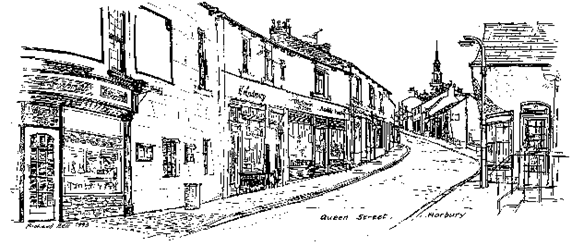
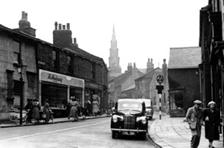
|
Queen Street, Horbury, was once known as Widgery Lane or Hodge Lane. The towns first street lamp stood here and under it gathered Christmas carol singers and Whitson walkers, not to mention pill sellers and amateur dentists. You can still catch the village’s Victoria Prize Band here on Christmas Eve after they have moved on from performing at Horbury WMC. |
|
Queen St. Horbury 1955 |
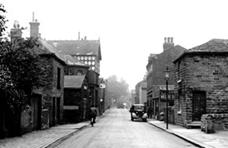
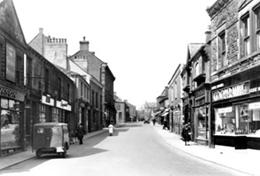
|
View looking up Cluntergate from Horbury WMC 1955 |
|
Horbury High Street 1955 |
|
HORBURY COAT OF ARMS Silver, on black band with three silver towers.
Originallythe coat of arms of local man Sir John de Horbiry, who was granted the Manor for life in 1302 by the Earl of Warenne for his services as Steward of the area.
The coat of arms was adopted by Horbury Urban District Council. They set the towers upright on the bend instead of lying along it, and added the motto “Pro bono oppido”- meaning “For the good of the town”.
|
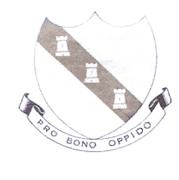
|
=========================================================================
A Brief History of the Working Men’s Club & Institute Union, CIU |


|
Rev. Henry Solly |
|
Hodgson Pratt |
|
The Working Men’s Club & Institute Union was formed at a meeting held at the Law Amendment Society Rooms in Waterloo Place on the 14th June 1862. The driving force for the formation of the CIU was the Reverend Henry Solly. The idea for forming Working Men’s Clubs was to encourage Working Men not to spend all their limited leisure time in Public Houses and Gin Palaces. The early Working Men’s Clubs, some formed as early as 1842, were “Reading Rooms” with access to Newspapers and Books, also places to play games such as chess, draughts and dominoes. It was several years before Henry Solly would accept that men enjoyed a beer or two, he believed men visited public houses for the company not the drink, therefore the first Clubs did not serve alcohol. Henry Solly was an avid fund raiser for the Union, collecting donations from the gentry of the time. |
|
Hodgson Pratt along with General Secretaries J J Dent and B T Hall are credited for turning the CIU into the Union we know today. In1865 it was decided that Clubs could sell beer ( although at first not recommended on “Prudential grounds” ). In the early years financially the Union was surviving only on donations and not on subscriptions from the member Clubs. It was the introduction of Associate Cards an idea from a council member, E Eisenhardt of the Bedford Club, which turned round the Unions finances in 1873, this enabled members of affiliated Clubs to visit other Clubs. A competition with a prize of 2 guineas was held to design the Associate Card. The winning design was by Henry Hill of Ashton-under-Lyne and is the design still in use today. |
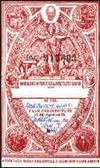
|
Associate Card |
|
Today the Club & Institute Union is the largest non-profit making social entertainment organisation in the UK, representing the interests and views of six million Club Members. It is an advisory and defensive organisation, neutral in party politics and non sectarian. There are currently 28 Branches in the UK and together with head office staff they have a wealth of experience in the running of Clubs. Clubs play an active role in the CIU by participating in Branch Council meetings and attending the Annual General Meeting where between 1,500 and 2,000 delegates enjoy lively debate and vote on issues raised. . |
|
Working Men’s Club & Institute Union 253/254 Upper Street London N1 1RY Tel: 020 7226 0221
Wakefield Branch 32 Haveroid Way Crigglestone Wakefield WF4 3PG
|
|
“Honour all Men, Love the Brotherhood, Use hospitality one to another. Be not forgetful to entertain strangers and he that need have friends must show him self friendly. |
Horbury |
